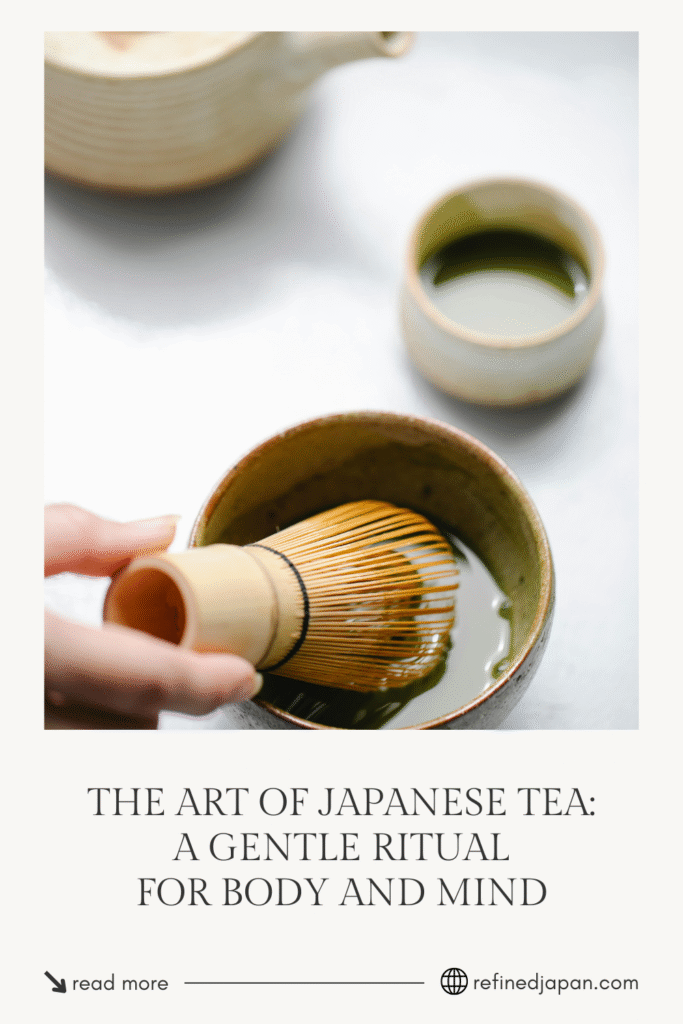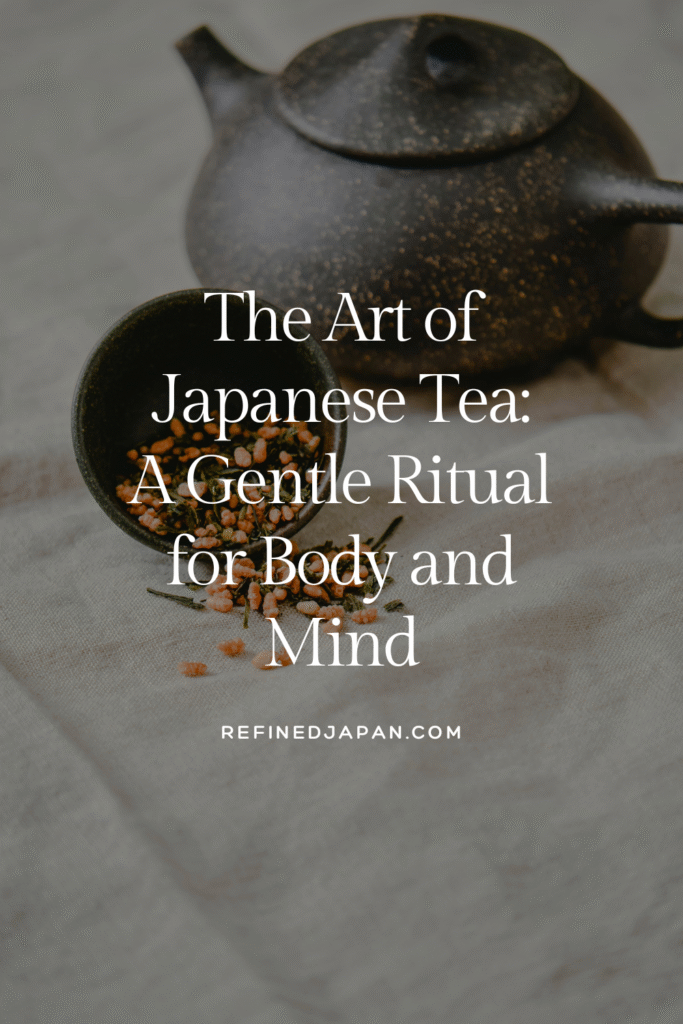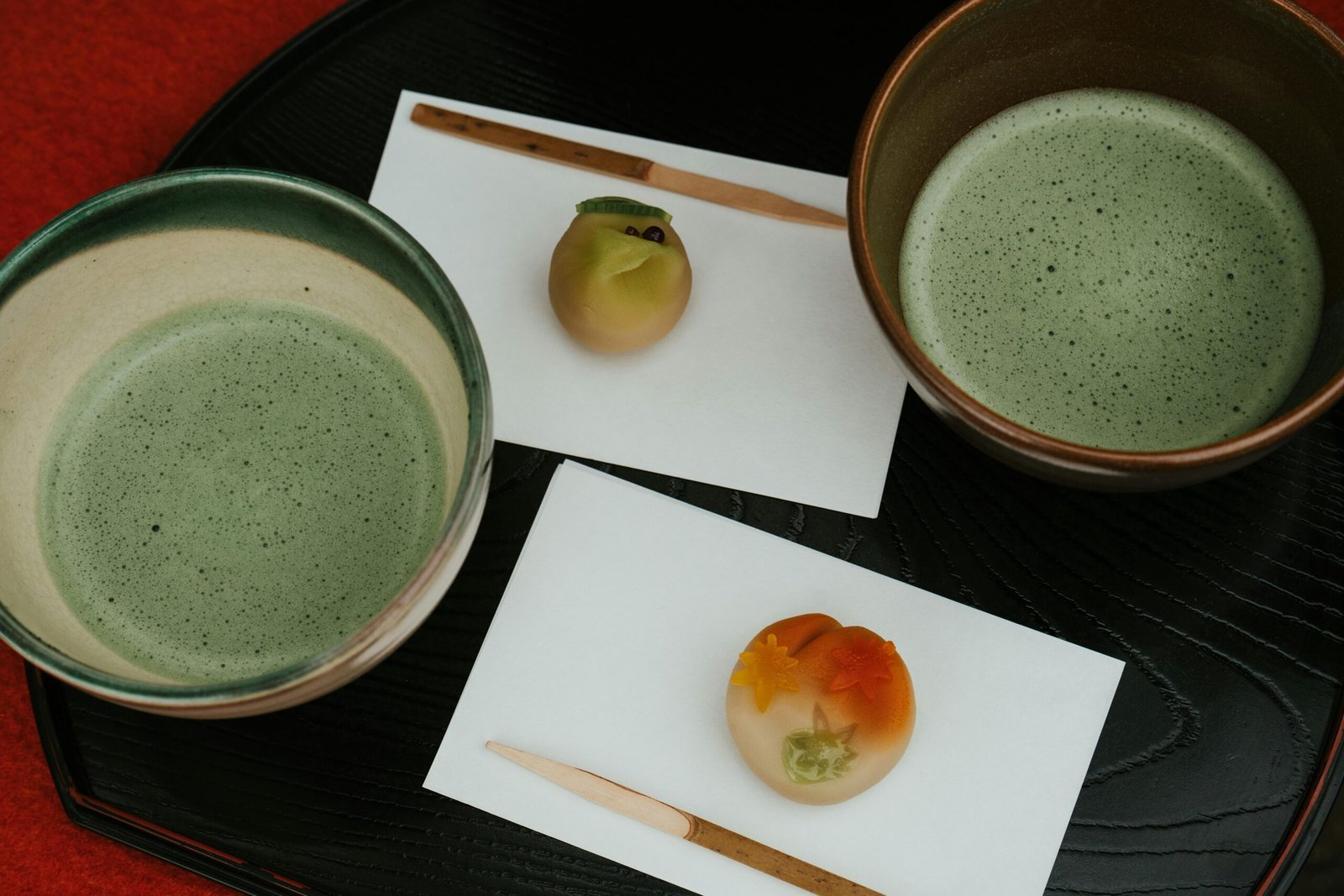Table of Contents
A Gentle Start: Embracing Mornings with Japanese Tea
Here’s a confession: I used to be that person who couldn’t function before downing at least two cups of strong coffee. You know the drill—stumble to the kitchen, press the magic button, and pray for consciousness to arrive.
But after years of this routine, my stomach started protesting. Persistent nausea, that uncomfortable burning feeling—you know the one. I kept pushing through until a friend gifted me some wakoucha, Japan’s elegant, slightly floral black tea. I figured I’d give it a try, mostly because I felt too rough to make my usual coffee.
And honestly? Game changer.
No more stomach pain. No more feeling queasy by mid-morning. Just this calm, clear-headed energy that actually lasted longer than my coffee ever did. It felt like I’d discovered a cheat code for mornings that nobody told me about.
So if you’ve ever wondered whether there’s a gentler way to start your day—one that doesn’t involve your nervous system going into overdrive—let me introduce you to Japan’s rich world of tea. From the Instagram-famous matcha to the cozy, underrated hojicha, these brews might just change your mornings (and evenings) in the best way possible.
Discovering Japanese Tea: More Than Just Matcha
Let’s be real: when most people think “Japanese tea,” they picture that vibrant green matcha latte from the trendy café down the street. And sure, matcha is wonderful—but it’s like knowing only one song from an entire album.
Japan’s tea culture is so much richer than that. Each type has its own personality, its own moment in the day, its own reason for existing. Here are four you should definitely know about:
🍃 Matcha – The Mindful Energizer
You know this one—the finely ground green tea powder that launched a thousand lattes. But here’s what makes it special: matcha gives you a focused, calm kind of energy thanks to an amino acid called L-theanine. It’s like coffee’s more zen cousin who actually has their life together.
Benefits: Packed with antioxidants (especially EGCG), boosts metabolism, promotes calm alertness
When to enjoy: Morning or early afternoon
Pro tip: Start with usucha (thin tea) if you’re new—it’s less intense than the thick, ceremonial version
🍂 Hojicha – The Roasted Comfort
This is my evening go-to. Hojicha is basically green tea that got the charcoal roasting treatment, giving it this gorgeous toasty, almost caramel-like aroma. It smells like autumn feels, if that makes sense.
The best part? It’s naturally low in caffeine, so you can drink it at 9pm without staring at your ceiling until 2am wondering why you made poor life choices.
Benefits: Gentle on the stomach, minimal caffeine, tastes like a warm hug
When to enjoy: Evenings, after meals, or whenever you need comfort in a cup
Personal favourite: The hojicha latte at Starbucks Japan is absolutely delicious—it’s become one of my go-to treats whenever I visit
🍵 Genmaicha – The Everyday Cozy Cup
Picture this: green tea mixed with roasted brown rice. Sounds weird? Trust me, it works. The rice adds this savoury, almost popcorn-like note that makes it incredibly easy to drink. It’s the tea equivalent of your favourite worn-in sweater.
Benefits: Mild caffeine, aids digestion, beloved by tea beginners
When to enjoy: Midday, with meals, or when you want something comforting but not too heavy
Origin story: Genmaicha was born from Japan’s “mottainai” (waste-not) culture. In the early Showa period, a Kyoto tea merchant had the brilliant idea to roast broken pieces of mochi from kagami biraki (a New Year tradition) and mix them with tea. What started as a clever way to use leftover ingredients became a beloved tea in its own right. These days, roasted brown rice is often used to keep costs down—since rice is cheaper than tea leaves—but that original spirit of resourcefulness remains
🌸 Wakoucha – Japan’s Gentle Black Tea
Here’s where things get interesting. When you think “black tea,” you probably picture British breakfast tea or a robust Assam that really wakes you up. Japanese black tea is… not that.
Wakoucha is smooth, slightly floral, and won’t destroy your stomach lining. When I first tried it, I thought “Wait, this is black tea?” It felt almost delicate. Perfect for people who want the comfort of black tea without the punch to the gut.
Benefits: Softer than Western black teas, gentle on digestion, excellent coffee alternative
When to enjoy: Morning or afternoon—basically whenever you’d reach for coffee
Why it’s different: Japanese tea plants and processing methods create a naturally sweeter, less astringent profile
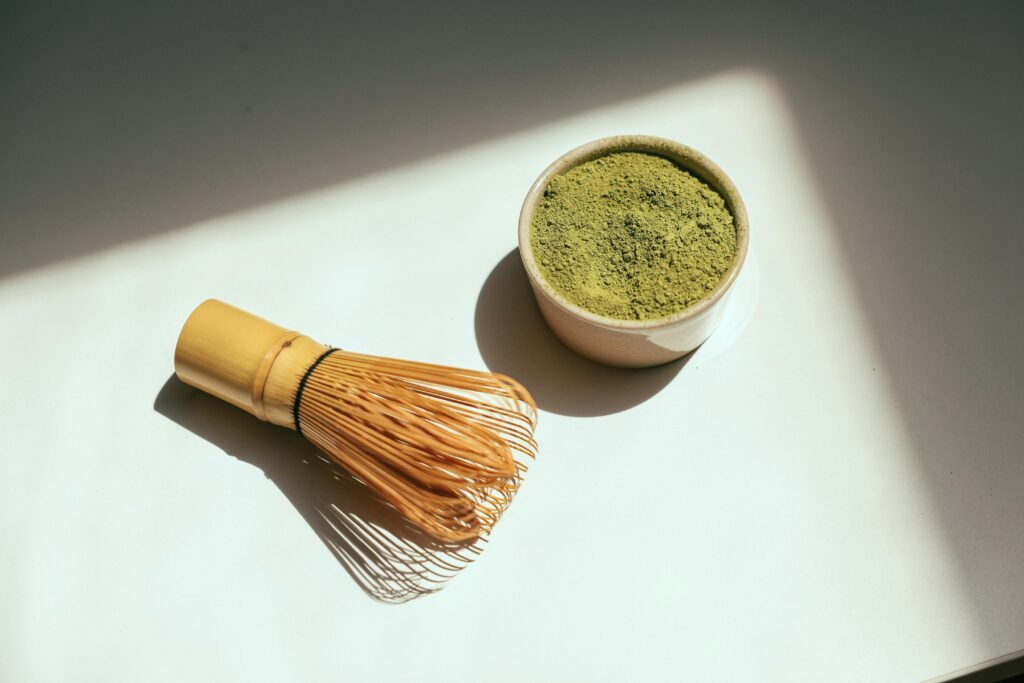

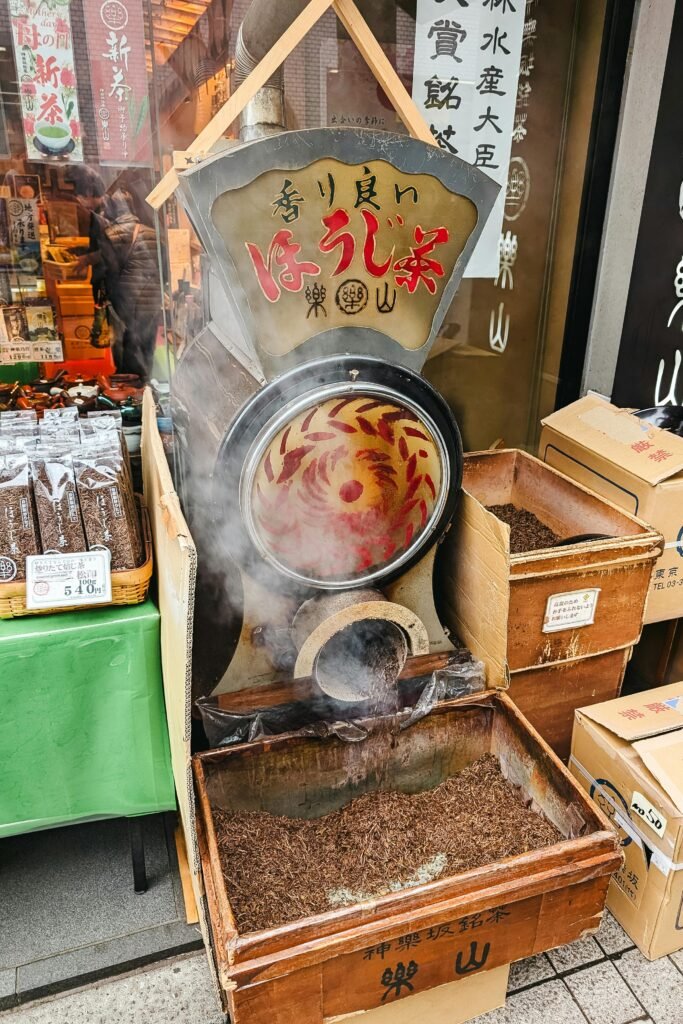

Japan’s Top Tea Brands to Try
Alright, so you’re convinced and ready to ditch (or at least occasionally replace) your coffee habit. But where do you actually get good Japanese tea without flying to Tokyo?
Here are five brands that deliver quality without the gatekeeping—whether you’re in London, Auckland, or anywhere with decent internet:
1. Lupicia(ルピシア)– A Modern Gateway to Japanese Tea
This is your friendly neighbourhood tea shop, Japanese-style. With over 400 varieties, beautiful tins that you’ll definitely keep and reuse, and flavours ranging from traditional to “wait, matcha strawberry?”—Lupicia makes Japanese tea accessible and fun.
📍Available across Japan and internationally + online shop
Start with: Their seasonal blends or basic sencha if you want classic vibes
2. Ippodo Tea(一保堂茶舗) – Centuries of Kyoto Excellence
When a tea company has been around since 1717, they’ve had time to figure things out. Ippodo is the real deal—the kind of tea you’d serve when you want to impress someone (or just treat yourself on a Sunday morning).
📍Available across Japan and New York store + online shop
Start with: Their matcha or hojicha—both are consistently excellent
3. Marukyu-Koyamaen(丸久小山園) – For the Matcha Connoisseur
If you’ve been practising your matcha whisking technique and are ready to level up, this is where you go. Their ceremonial-grade matcha is the stuff that tea masters use in actual tea ceremonies. No pressure.
📍Kyoto + online shop
Start with: Their mid-range matcha—you don’t need the most expensive one unless you’re really going for it
4. Yamamotoyama(山本山) – Trusted and Timeless
Founded in 1690 (yes, really), this Tokyo brand is basically in every Japanese household. Think of it as the reliable friend who always shows up—maybe not flashy, but consistently good and reasonably priced.
📍Available at department stores across Japan & online shop
Start with: Their hojicha or genmaicha—classic, approachable, delicious
5. Sazen Tea(サゼンティー) – A Bridge Between Cultures
These folks get it. They know you might be intimidated by Japanese tea culture, so they offer detailed guides, beautiful teaware, and teas selected specifically for the global market. It’s like having a knowledgeable friend walk you through everything.
📍Online shop
Start with: Their starter sets—they take the guesswork out
The Harmony of Tea and Sweets: 5 Traditional Wagashi Makers
Just like how Brits have biscuits with tea and Kiwis have Anzac biscuits with coffee, Japanese tea culture has its own sweet companion—wagashi.
But wagashi isn’t just “Japanese sweets.” These are edible art pieces made from red bean paste, rice flour, and seasonal ingredients. They’re designed to balance the slight bitterness of tea, and honestly, the seasonal designs are so beautiful you might feel bad eating them. (You’ll get over it.)
1. Toraya(とらや) – Timeless Elegance in Every Bite
Over 500 years old and still going strong. Their signature yokan (sweet red bean jelly) comes in flavors and designs that change with the seasons. Spring brings cherry blossoms, autumn brings maple leaves—you get the idea.
📍Tokyo, Kyoto, and department stores nationwide + online shop
🔗Website
Pair with: Matcha or sencha
2. Minamoto Kitchoan(源 吉兆庵) – Seasonal Beauty Meets Flavor
If Instagram had existed in feudal Japan, these would be the treats everyone would be posting. Their fruit-based confections are almost too pretty to eat. Almost.
📍Shops across Japan and global cities like New York, London, Singapore, etc.
🔗Website
Pair with: Any tea, really—they’re that good
3. Kagizen Yoshifusa(鍵善良房) – Kyoto’s Refined Sweetness
This 18th-century Kyoto spot is famous for kuzukiri—these translucent arrowroot noodles you dip in black syrup. It’s refreshing, elegant, and the kind of thing you’d never think to make at home but absolutely should try.
📍Kyoto
🔗Website
Pair with: Hojicha or cold sencha in summer
4. Tsuruya Yoshinobu(鶴屋吉信) – Artful Omotenashi
They have a tea room where artisans handcraft namagashi (fresh sweets) right in front of you. It’s like dinner theater, but make it dessert and tea. The skill involved is mesmerising—these folks are basically sculptors who work in bean paste.
📍Kyoto and Tokyo flagship stores + online shop
🔗Website
Pair with: Matcha, of course
5. Wagashi Asobi – Tradition with a Contemporary Twist
The new kid on the block who’s shaking things up. They take traditional wagashi and give it a modern, minimalist aesthetic. It’s like if Scandinavian design met Japanese tradition and they became best friends.
📍Tokyo + Online boutique
🔗Website
Pair with: Anything—they’re versatile and fun
How to Begin Your Own Tea Ritual at Home
Okay, so you’ve got your tea, maybe some wagashi, and now you’re thinking “But how do I actually do this?” Here’s the thing: there’s no secret formula. You don’t need to memorise tea ceremony rules or invest in expensive equipment. This is about creating a small, intentional moment in your day—not adding another thing to stress about.
🌿 1. Choose Your Tea Intentionally
Rather than grabbing whatever’s closest, take five seconds to think: “What do I need right now?” Calm energy? Comfort? A coffee replacement? Let that guide your choice.
Keep a few types on hand and rotate based on mood and time of day. Morning wakoucha, afternoon sencha, evening hojicha—whatever feels right.
🫖 2. Use Simple, Thoughtful Tools
A kyusu (Japanese teapot) is lovely but not essential. Your favourite teapot works perfectly fine. For matcha, a whisk (chasen) and bowl (chawan) are traditional, but I’ve seen Japanese tea shops share a clever tip: if you don’t have the proper tools, a protein shaker works surprisingly well for creating that frothy texture. Sometimes the simplest solutions are the best ones.
🕊️ 3. Create a Quiet Setting
Here’s the real secret: turn off your phone notifications. Seriously. Just for five minutes. Sit near a window if you can. Step out onto your deck or balcony to breathe in some fresh air. Maybe play some low-key music.
This isn’t about being Instagram-perfect. It’s about giving yourself permission to just… stop for a moment.
🍪 4. Add a Small Treat (Optional but Lovely)
Wagashi is traditional, but honestly? A nice cookie works too. A piece of dark chocolate. Whatever makes the moment feel special to you. The point isn’t authenticity—it’s appreciation.
🧘 5. Sip Slowly, Breathe Deeply
Don’t scroll. Don’t multitask. Just notice the tea—the warmth of the cup, the aroma, how the flavour changes as it cools slightly. Let your mind wander if it wants to. You’re not trying to achieve anything here. You’re just… being.
It sounds simple because it is. And that’s exactly why it works.
A Small Ritual with a Big Impact
Look, I’m not going to pretend that drinking Japanese tea will solve all your problems or turn you into a zen master overnight. Life is still complicated, mornings are still chaotic, and sometimes you’ll absolutely need that coffee.
But here’s what I have noticed since making tea a regular part of my routine: those few minutes of quiet become something I look forward to. A small island of calm in the middle of everything else. And over time, those small moments actually do add up.
Whether you’re swapping out your morning coffee for wakoucha (like I did), unwinding with evening hojicha, or just curious about trying something new—there’s no wrong way to start. Pick a tea that sounds interesting, make it however feels natural, and see what happens.
You might just discover your new favourite ritual.
Bookmark this curated guide on Pinterest
